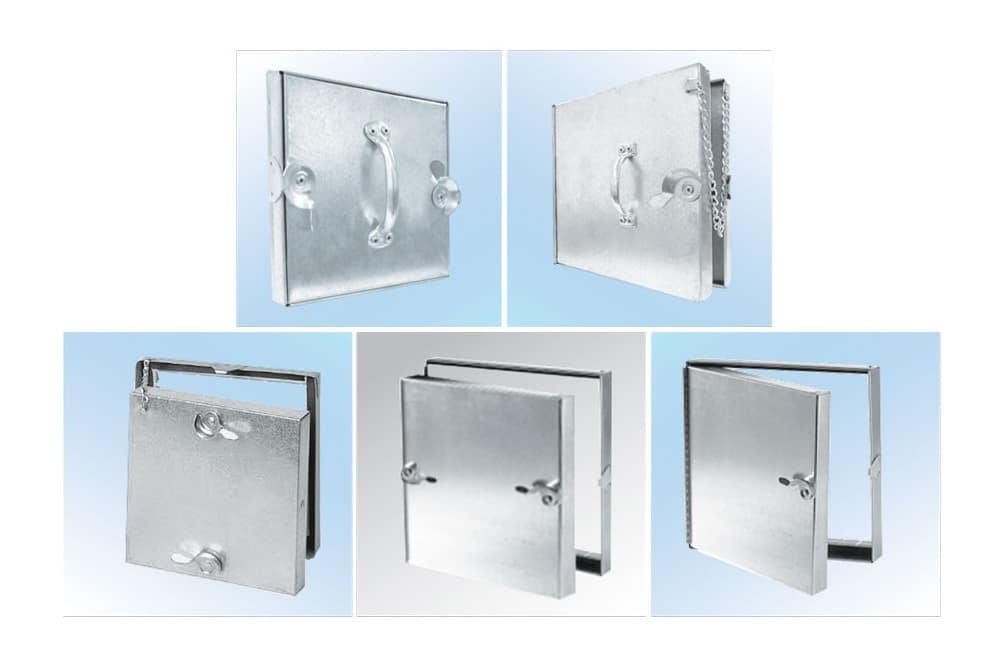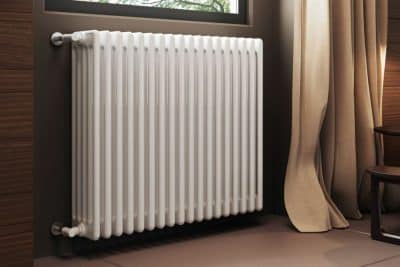HVAC maintenance shouldn’t be a struggle, but too often, it is. Technicians are forced to squeeze into tight spaces, work around obstructed ductwork, and waste valuable time trying to reach essential components.
Without proper access points, what should be a straightforward task turns into a frustrating, labor-intensive job.
Duct access doors solve this problem. Designed to provide easy entry into duct systems, these panels streamline maintenance, improve system performance, and help buildings meet safety standards—all while saving time and effort.

Importance of HVAC Systems in Modern Buildings
HVAC systems are at the heart of any modern building. They do more than just heat or cool the space—they help make the indoor environment comfortable and healthy. These systems regulate temperature, provide fresh air, and ensure that the air quality is clean and safe to breath
However, just having an HVAC system isn’t enough. Regular maintenance and inspections are important for keeping the system running at its best.
To make sure maintenance is easy and efficient, easy access to HVAC components is key. Having clear, convenient access to ducts, filters, dampers, and other vital parts makes inspections and repairs faster and more cost-effective.
What Are Duct Access Doors?
Duct access doors are panels installed in HVAC systems that provide easy entry points into the ductwork for maintenance, inspections, and repairs. They allow technicians to quickly reach key components such as dampers, filters, and fire dampers without the need to dismantle the ductwork or disturb the system.
Whether for routine upkeep or emergency repairs, these doors are essential for keeping HVAC systems running smoothly and preventing costly downtime.
Benefits of Duct Access Doors in Construction
A duct access door offers various advantages that contribute to the efficiency and security of building systems, such as:
- Improved Airflow Efficiency: Duct access doors allow for quick adjustments to dampers and filters, helping to improve airflow and maintain HVAC system performance.
- Enhanced Safety and Compliance: Access doors provide essential entry points for fire damper inspections, ensuring compliance with fire safety regulations and improving building safety.
- Cost-Effective Maintenance: By reducing the need for extensive system dismantling, duct access doors minimize labor costs, and the time needed for repairs or adjustments.
- Energy Efficiency: Regular access to ductwork helps prevent dust buildup and blockages, leading to a more energy-efficient HVAC system with lower operational costs.
- Longer System Lifespan: With easy access for regular inspections and adjustments, duct access doors help extend the life of HVAC components, preventing early wear and costly replacements.
Factors to Consider When Choosing Duct Access Doors
Choosing the right type ensures long-lasting performance and meets safety standards. Here are the factors to look for when choosing duct access doors:
- Material Durability: Opt for galvanized or stainless steel for long-lasting performance and resistance to wear.
- Code Compliance: Ensure the access door meets local building codes and safety regulations for a secure and compliant system.
- Size and Placement: Select the right door size for easy access to critical components while maintaining efficient use of space.
- Insulation Needs: Consider insulated access doors to help support energy efficiency and temperature control within the HVAC system.
Creative Ways to Integrate Duct Access Doors in Building Design
Here are five creative ways to incorporate duct access doors seamlessly into building layouts:
Match the Design of the Room
Duct access doors can be customized to blend with the room’s décor. Whether painted to match the wall color or designed to resemble a cabinet panel, these doors can hide in plain sight. This ensures the room looks sleek without sacrificing access to HVAC systems.
Choosing recessed doors adds a clean, minimalist touch, while custom finishes allow you to match the door to the overall design.
Hide Them in Concealed Spaces
For spaces where you don’t want the access doors to be visible, place them behind furniture, cabinets, or hidden panels. This keeps the doors out of sight while still allowing easy access when needed.
Hiding duct access doors in concealed spaces works well in areas with limited space or where the room’s design is more important.
Integrate Into Modular Wall Systems
In spaces with modular walls, duct access doors can be integrated into the system for easy maintenance without disrupting the design. Duct access doors are perfect for flexible areas like offices or commercial spaces, where layouts may change over time.
Access doors that are part of a modular system can be adjusted or moved as needed, ensuring that HVAC systems stay accessible without interrupting the design flow.
Incorporate into Multi-Function Spaces
Access doors can be cleverly hidden within furniture or built-ins like shelves or storage units. This ensures they stay functional without taking up space or disrupting the room’s design.
It’s a smart, space-saving way to keep the room looking neat while maintaining access to HVAC components.
Conclusion
Duct access doors are key to keeping the HVAC system working well. When placed thoughtfully, they can blend into the design of any room without standing out. Choosing the right access points helps improve system efficiency, lower repair costs, and ensure comfort in the long run.








